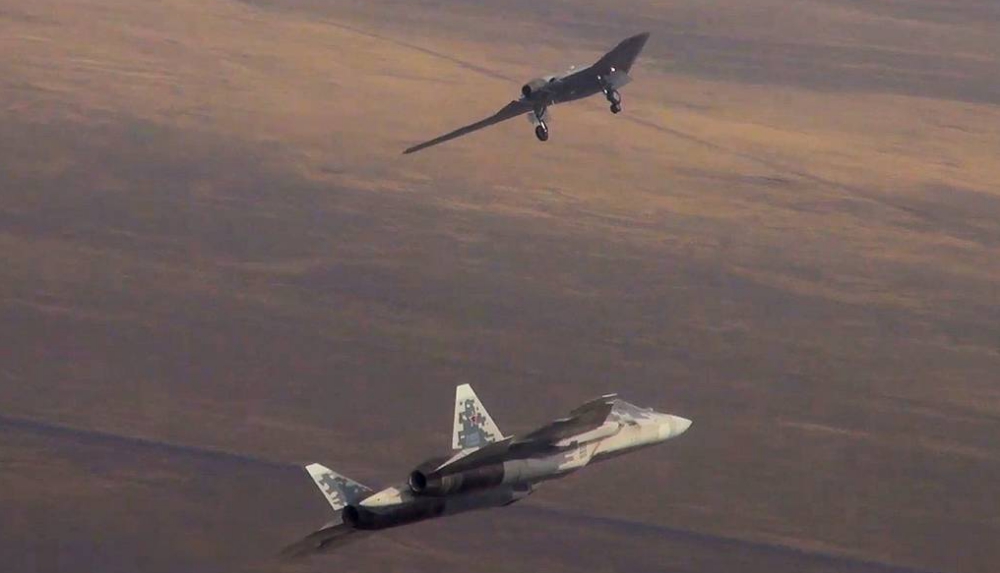A pilot of the Sukhoi Su-57 fifth-generation fighter jet will simultaneously coordinate the operations of four latest Okhotnik heavy strike drones, a source in the domestic aircraft-building industry told TASS on Tuesday.
“Currently, the options of controlling strike drones from a Su-57 cockpit are being worked out. A fighter jet is expected to carry from two to four Okhotnik drones,” the source said.
TASS has no official confirmation of this information yet.
As the press office of Russia’s United Aircraft Corporation (UAC) earlier told TASS, the latest Okhotnik drone will strike aerial and ground targets in network-centric interaction with a Su-57 fighter. In their joint employment with the fifth-generation fighter, Okhotnik drones will deal with a full range of tasks, striking aerial and ground targets under the command of a Su-57’s pilot.
The Sukhoi Su-57 is a Russian-made fifth-generation multi-role fighter designated to destroy all types of air, ground, and naval targets. The Su-57 fighter jet features stealth technology with the broad use of composite materials, is capable of developing supersonic cruising speed, and is furnished with the most advanced onboard radio-electronic equipment, including a powerful onboard computer (the so-called electronic second pilot), the radar system spread across its body and some other innovations, in particular, armament placed inside its fuselage.
The Su-57 took to the skies for the first time on January 29, 2010. Compared to its predecessors, the Su-57 combines the functions of an attack plane and a fighter jet while the use of composite materials and innovation technologies and the fighter’s aerodynamic configuration ensure the low level of radar and infrared signature.
The plane’s armament will include, in particular, hypersonic missiles. The fifth-generation fighter jet has been successfully tested in combat conditions in Syria.
The Russian Armed Forces received the first Su-57 fighter in 2020.
The S-70 ‘Okhotnik’ developed by the Sukhoi Design Bureau features stealth technology and the flying wing design (it lacks the tail), which reduces its radar signature. According to the data of open sources, the drone has a take-off weight of 20 tonnes and can develop a speed of around 1,000 km/h.
The Okhotnik heavy attack drone performed its debut flight on August 3, 2019. The flight lasted over 20 minutes under an operator’s control. On September 27, 2019, the Okhotnik performed a flight together with a Su-57 fifth-generation fighter jet. The drone maneuvered in the air in the automated mode at an altitude of around 1,600 meters, and its flight lasted over 30 minutes.
The serial deliveries of Okhotnik heavy strike drones to the Russian troops are scheduled to begin from 2024.
Source: TASS

